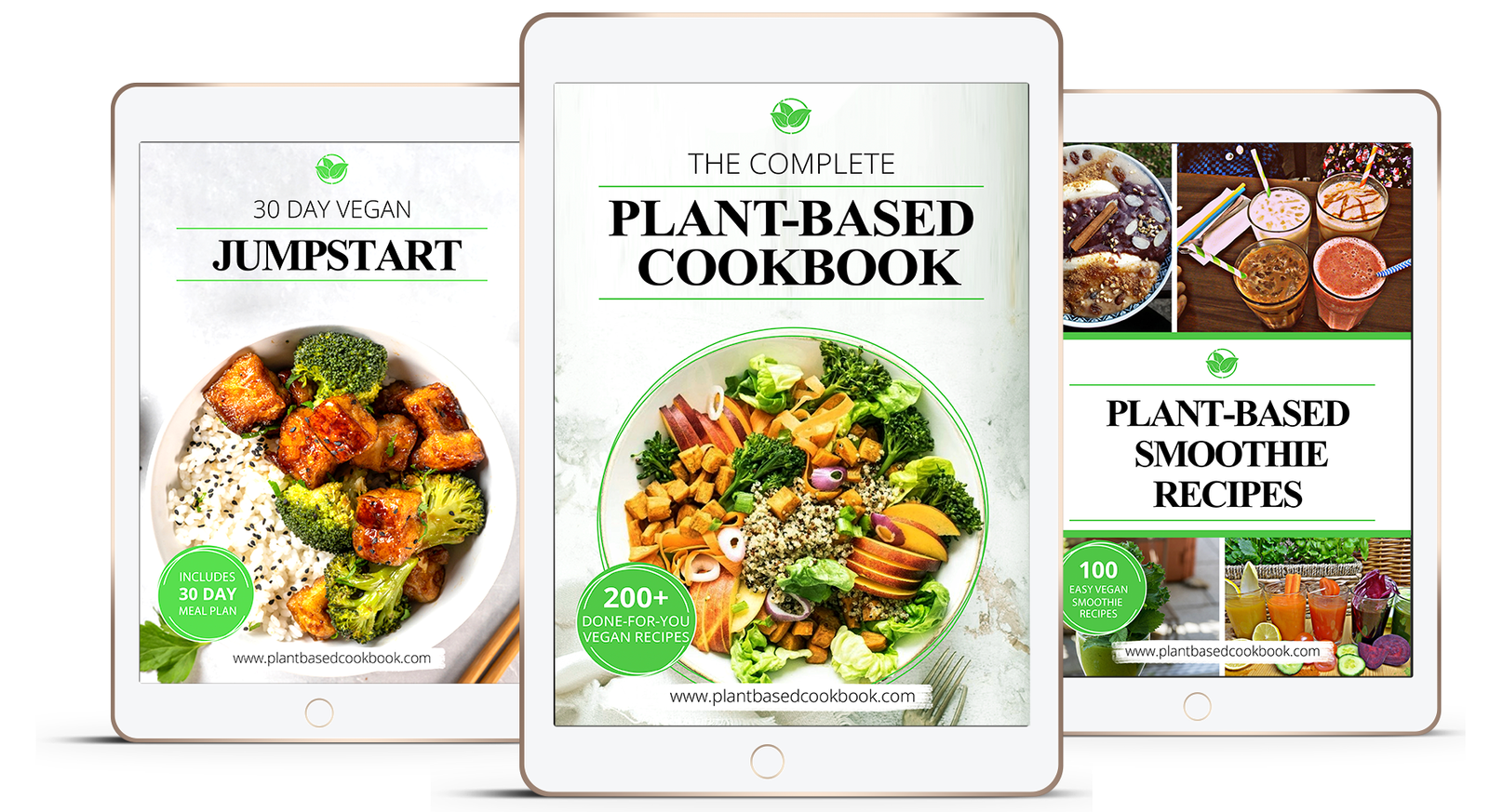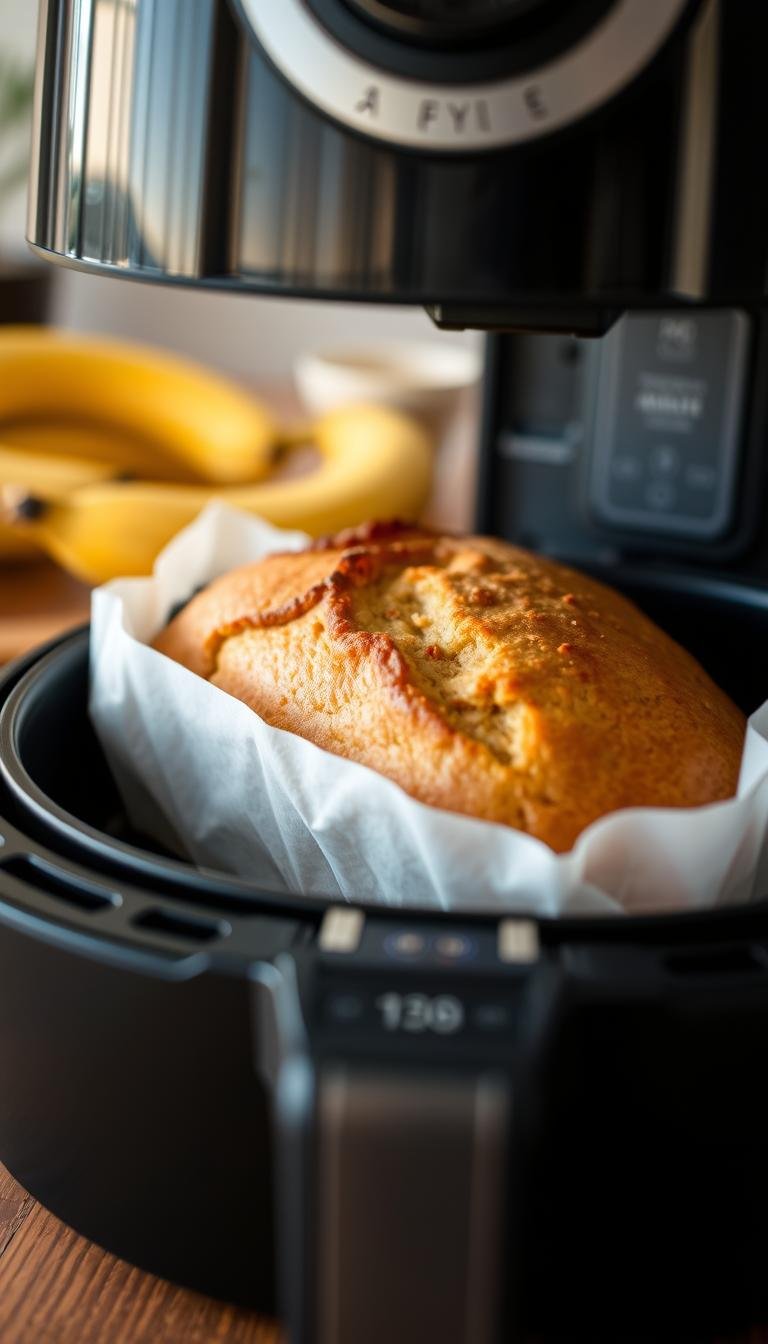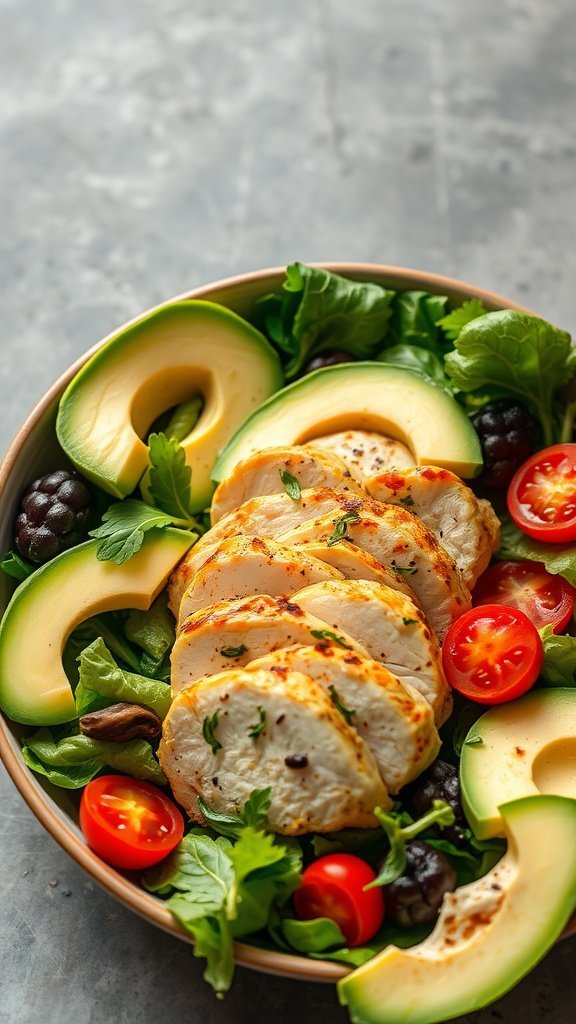(Hey! Some links in this post may be affiliate links — meaning I may earn a small commission if you buy through them, at no extra cost to you. As an Amazon Associate, I earn from qualifying purchases. I only share products I genuinely love and think you’ll find useful too. Read the full disclosure here).
This guide shows how fruit salads can make meals vibrant and full of nutrients. They’re great for breakfast or dessert, adding vitamins and natural sugars. Find out how to mix flavors and textures for delicious fruit salads that everyone will enjoy.
Healthy fruit salads are perfect for any time. They’re easy to make, fit any diet, and use fresh seasonal fruits. They’re not just a snack; they’re a culinary journey.
Discover ways to make each bite colorful and tasty. Learn to choose the ripest fruits, mix sweet and tangy flavors, and present dishes that look amazing. Get ready to see fruit salads as your favorite dish for health and fun!
Contents
- 1 Why Fruit Salads Are a Great Choice for Any Meal
- 2 Types of Fruit Salads to Try
- 3 How to Choose the Best Fruits for Your Salad
- 4 Creative Dressings and Toppings for Fruit Salads
- 5 Recipes to Delight Your Taste Buds
- 6 Fruit Salad Serving Suggestions
- 7 Health Considerations When Making Fruit Salads
- 8 Storing and Preserving Your Fruit Salad
- 9 Fun Facts About Fruits in Salads
- 10 Ways to Customize Fruit Salads for Personal Taste
Why Fruit Salads Are a Great Choice for Any Meal
Healthy fruit salads are not just for summer. They’re good for any meal. They’re full of vitamins and sweet, making meals fun and healthy.
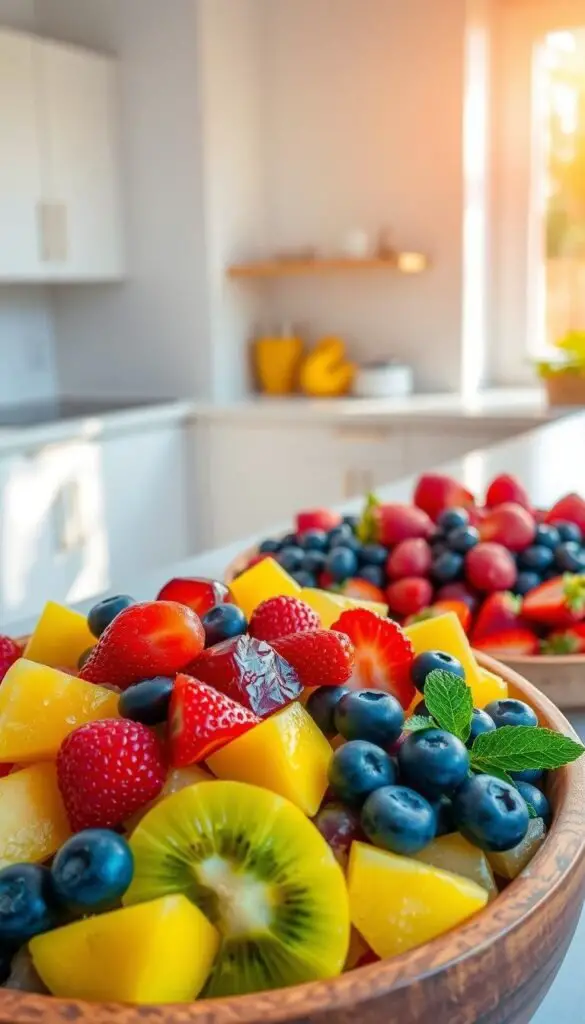
Nutritional Benefits of Fresh Fruits
Fruits in salads give you important nutrients. Berries, mangoes, and kiwis have antioxidants and vitamin C. They help keep you healthy.
Fiber in apples or pears helps your digestion. Bananas give you potassium for energy. Eating seasonal fruits means you get the best taste and nutrition.
Versatility for Different Occasions
Fruit salads fit any event. For breakfast, try yogurt with pineapple and strawberries. Lunch? Mix grapes, oranges, and mint for a light side dish.
At dinner parties, drizzle honey over melon and mango. Fresh fruit salad ideas are perfect for any time, from school lunches to holiday meals.
- Quick tip: Add spinach or kale for a green twist.
- Pro hack: Prep ingredients in advance for fast meal assembly.
Looking for a healthy option or a colorful dish? Fruit salads are great all year round. They’re more than a snack; they’re a meal solution.
Types of Fruit Salads to Try
Exploring different fruit salads opens a world of flavors and textures. From familiar favorites to adventurous blends, there’s a mix for every palate.
Classic Fruit Salad Combinations
Start with timeless choices like apples, bananas, and strawberries. These combinations work well for quick breakfasts or light snacks. Add citrus like oranges or grapefruit for a tangy twist. Mix greens like spinach or mint to create a refreshing green fruit salad.

Exotic Fruit Salad Variations
Experiment with tropical fruit salad combinations like mango, pineapple, and kiwi. Add dragon fruit or starfruit for a vibrant, adventurous bowl. Try coconut flakes or lime juice to enhance tropical flavors. Specialty stores or online retailers make sourcing these fruits easy.
“The beauty of fruit salads is their flexibility—let curiosity guide your choices.”
Seasonal Fruit Salad Options
- Summer: Watermelon, berries, and peaches.
- Fall: Apples, pears, and pomegranate seeds.
- Winter: Mandarin oranges, clementines, and dried fruits.
- Spring: Rhubarb, strawberries, and fresh herbs.
Seasonal produce ensures peak flavor and nutrition. Check local farmers’ markets for the freshest picks.
How to Choose the Best Fruits for Your Salad
Choosing the right fruits is essential for a tasty homemade fruit salad. The best ingredients add flavor and texture, making each bite special. Here are some tips to help you pick the perfect fruits for your next salad.
Tips for Selecting Ripe Fruits
- Color matters: Look for deep colors like ruby-red strawberries or golden mangoes. If bananas are too green, they’re not ripe yet.
- Smell test: A sweet smell means they’re ripe. Check if pineapples and melons smell good at the stem end.
- Feel the texture: Berries should be plump. Peaches and nectarines should give a little when pressed.
- Seasonal picks: Fruits taste better when they’re in season. Use citrus in winter and berries in summer for the best flavors.
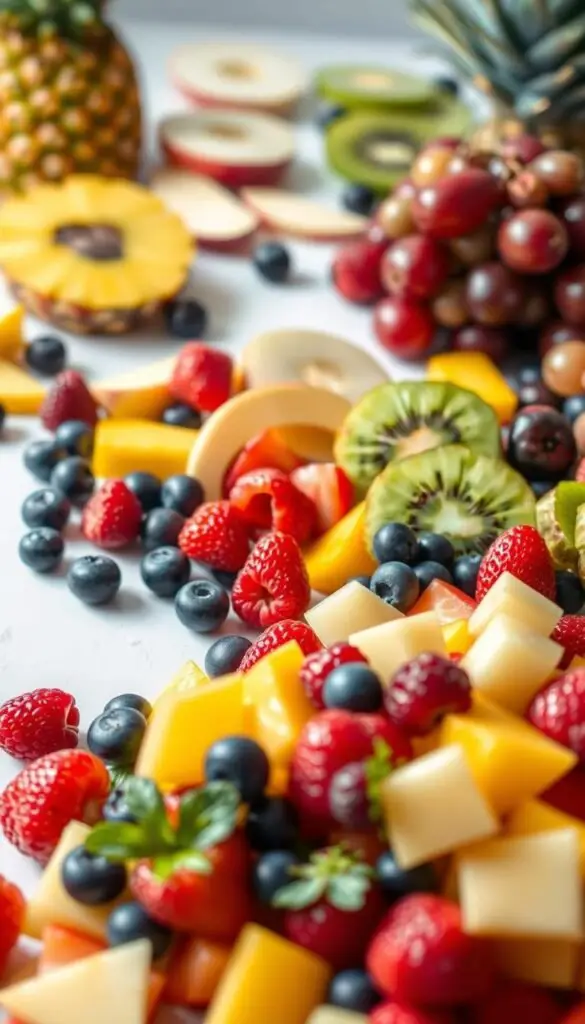
Organic vs. Conventionally Grown Fruits
Consider your options carefully:
- Organic: They have less pesticide, but might cost more. Best for thin-skinned fruits like berries or grapes.
- Conventional: They’re more affordable and easy to find. Just make sure to wash them well before eating.
Choose based on what you can afford and what’s available. Both options can make your homemade fruit salads delicious when fruits are fresh and ripe.
🍓 Fruit Pairing Guide for the Perfect Salad
Mix and match flavors and textures with this simple chart. Use it to build fruit salads that are balanced, refreshing, and full of variety.
| Sweet Fruits | Tart Fruits | Crunchy Fruits | Soft Fruits |
|---|---|---|---|
| Mango | Kiwi | Apple | Melon |
| Banana | Pineapple | Pear | Papaya |
| Grapes | Berries | — | — |
Creative Dressings and Toppings for Fruit Salads
Make delicious fruit salads stand out with the perfect finishing touches. The right dressing or topping can bring out the natural flavors and add texture. This makes every bite a delight. Here are some ideas to elevate your next fruit salad:
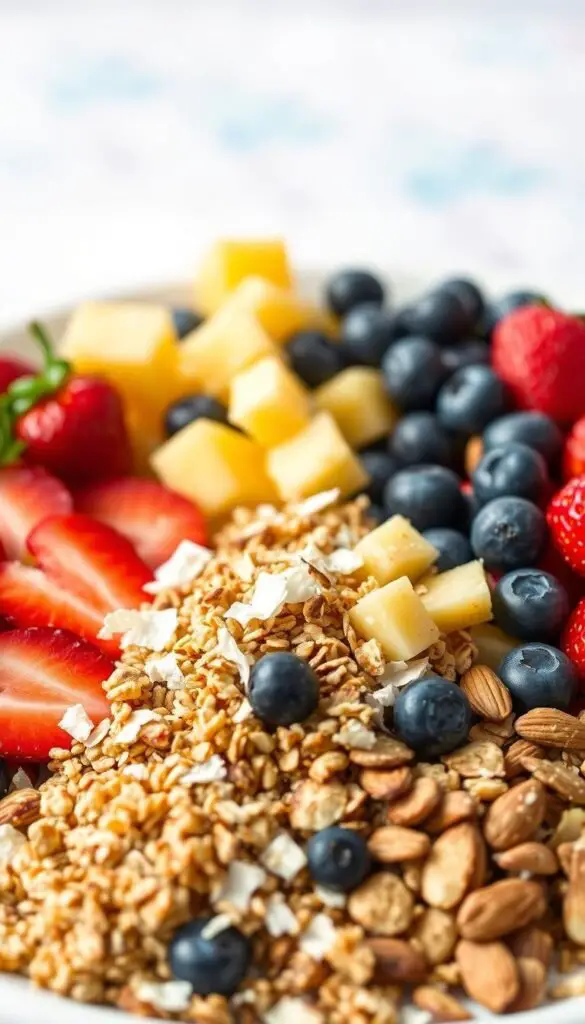
“A great dressing isn’t just a garnish—it’s the secret to elevating fruit salads into memorable dishes.” – Chef Maria Gonzalez, Culinary Institute of America
Citrus-Based Dressings
Bring a burst of tangy flavors to your salad. Try these dressings:
- Honey-lime: Mix lime juice, honey, and a dash of chili flakes
- Orange-vanilla: Blend orange zest, vanilla extract, and a splash of coconut milk
- Lemon-mint: Combine lemon juice, chopped mint, and a pinch of salt
Yogurt and Cream Options
For a creamy contrast, choose from:
- Whipped cream (dairy or coconut-based)
- Plain Greek yogurt with a drizzle of maple syrup
- Coconut yogurt mixed with a squeeze of lime
Nuts and Seeds for Crunch
Add crunch with toasted toppings like:
- Almonds, walnuts, or pecans for savory-sweet combinations
- Pepitas (pumpkin seeds) for a nut-free option
- Chia seeds for a crunchy yet healthy boost
Match toppings with the fruits. For example, pair tropical fruits with coconut yogurt and toasted macadamias. Always check for allergies before adding nuts. These best fruit salad toppings can turn any dish into a showstopper. They’re perfect for breakfast, desserts, or summer gatherings!
Recipes to Delight Your Taste Buds
Turn everyday meals into special treats with these easy fruit salad recipes. They’re perfect for any time, from quick snacks to party highlights. These recipes show how simple ingredients can make colorful fruit salads that wow everyone.

Simple and Quick Fruit Salad Recipes
Try a 5-minute classic: mix pineapple, strawberries, mandarin oranges, and orange juice. Add honey for sweetness. This easy fruit salad recipes mix is great for quick breakfasts or lunches.
Gourmet Fruit Salad Ideas
Make dishes fancy with mango, kiwi, and dragon fruit in coconut-lime dressing. Top with pomegranate arils and microgreens for crunch. Add Chobani Greek yogurt for protein. Serve in honeydew halves for a beautiful look.
Festive Fruit Salads for Celebrations
- Independence Day: Make star shapes with watermelon, top with blueberries and lime zest.
- Christmas: Mix red grapes, green kiwi, and pomegranate for a holiday look. Add mint sprigs.
- Halloween: Carve apple moons, add yogurt “cobwebs,” and blackberry “eyes” for a spooky touch.
Use fruits like dragon fruit and blood oranges for colorful fruit salads that look like decorations. Layer them in glasses for a stunning display.
🍓 Build Your Own Fruit Salad — Free Tool!
Want to get creative with your fruit salad? Use my Interactive Fruit Salad Builder to mix and match your favorite fruits, toppings, and dressings — then get a custom recipe instantly!
- ✅ Choose your base fruits, add-ins, dressings, and toppings
- ✅ See your personalized recipe live
- ✅ Great for meal prep, parties, and kids
Fruit Salad Serving Suggestions
Making your homemade fruit salads memorable starts with how you present them. The right serving style can turn a simple dish into a showstopper. Here’s how to elevate every detail:
Ideal Bowls and Utensils
Choose dishes that highlight vibrant layers. Glass trifle bowls let the colors of colorful fruit salads shine, while mason jars add a rustic charm for individual portions. Avoid reactive metals like copper—acidic fruits can leave stains. Wooden utensils pair well with natural themes.
Portion Sizes for Different Events
- Appetizers: ½ cup per guest.
- Sides: ¾ cup per person.
- Desserts: 1 cup servings.
- Kids: Half adult portions in fun containers.
- Picnics: Pack in leak-proof containers for easy sharing.
Cool Presentation Tips
Turn meals into art with these tricks: Layer fruits in clear glass bowls to show vibrant hues. Thread chunks onto skewers sticks for handheld bites. Hollow out a watermelon half as a bowl, or use edible flowers as garnish. For a minimalist look, arrange slices in a spiral pattern.
Remember, homemade fruit salads taste best when served fresh. Let the presentation match the occasion—from casual backyard gatherings to holiday tables. A little creativity makes every bite more enjoyable!
Health Considerations When Making Fruit Salads
Making healthy fruit salads is about balancing nutrition and safety. A few steps can make these dishes good for everyone.
Allergies to Watch Out For
Fruits like strawberries, mango, or kiwi can cause allergies. Some fruits might also trigger pollen allergies, like apples and birch pollen. To make sure all guests are safe:
- Use seeds instead of nuts for delicious fruit salads that are nut-free.
- Be clear about what’s in your salad.
- Choose fruits like cantaloupe or citrus that are less likely to cause allergies.
Sugar Content in Fruits
Fruits have different amounts of sugar. Berries and citrus have less sugar than fruits like pineapple. For a balanced salad:
- Combine fruits with a lot of sugar, like mango or banana, with fiber-rich fruits like apples.
- Keep portions small to enjoy flavor without too much sugar.
“Fruits’ natural sugars provide energy, but moderation supports overall wellness,” states the American Diabetes Association.
By mixing textures and flavors, you can make healthy fruit salads that are also delicious. Small changes can make a big difference!
Storing and Preserving Your Fruit Salad
Keeping fruit salads fresh is key. It makes your fresh fruit salad ideas last longer. Here’s how to keep them fresh and cut down on waste.
Use containers that keep air out, like glass jars or plastic ones. Glass is best for fruits like citrus to prevent them from getting soggy. Adding a squeeze of lemon juice before sealing can also help prevent browning.
- Store in the fridge at 34-40°F (1-4°C) to slow spoilage.
- Layer delicate berries on top to avoid bruising.
- Keep cut fruits separated if mixing later—like nuts or honey—until serving.
Fruit salads usually last 1-2 days. Berries and melons can last up to 3 days. But tropical fruits like mango or pineapple should be eaten within 24 hours. Always check for soft spots or color changes before serving.
Use overripe fruits in smoothies or freeze them in ice cube trays. Overripe mango or peaches are great in yogurt bowls.
When making easy fruit salad recipes, think about storage. Add berries last for short-term storage. A bit of planning makes every bite delicious!
Fun Facts About Fruits in Salads
Did you know fruit salads have hidden stories behind every bite? Let’s uncover surprising details about the fruits we love and how fruit salads traveled through time.
The Top Fruits Used in Salads
Apples, bananas, and grapes are classics in fruit salads. But now, tropical fruits like mangoes, pineapples, and kiwis are all the rage. These tropical fruit salad combinations bring bold flavors and bright colors to menus.
- Apples: Crunchy and versatile, used in 70% of U.S. home recipes.
- Mangoes: Star of tropical mixes, popular in 45% of modern salad recipes.
History of Fruit Salads Worldwide
Cultures worldwide have mixed fruits for centuries. Ancient Romans enjoyed “sapa”-soaked figs and pomegranates. By the 1800s, Victorians called their mixes “macedoines,” a French term for blended fruits. In the 1950s, gelatin-based salads became a hit in American kitchens. Today, global twists include:
- Mexico: Jicama and chili in tangy salads.
- Asia: Lychee and coconut in refreshing bowls.
- Middle East: Dates paired with citrus for sweetness and texture.
From ancient feasts to modern fusion dishes, fruit salads evolve with innovation. Next time you mix berries or slice mangoes, remember you’re part of a tradition thousands of years in the making!
Ways to Customize Fruit Salads for Personal Taste
Make your fruit salads stand out with simple changes. Start with basic recipes, then add your favorite flavors. This way, you can create healthy salads that fit your taste or mood.
Adding Herbs and Spices
Herbs like basil or mint can make your salad fresh. Try ¼ cup chopped basil with strawberries and kiwi, or a handful of torn mint leaves with watermelon. A little cinnamon or black pepper adds warmth without hiding the fruit’s taste.
Start with a small amount, like ½ teaspoon of spice per bowl. Then, adjust to your liking.
Incorporating Superfoods for Extra Health Benefits
Enhance your salad with superfoods. Add a tablespoon of chia seeds for crunch and protein, or a quarter-cup of goji berries for a tangy taste. Hemp hearts bring a subtle nuttiness, while bee pollen adds a floral hint (use it sparingly—it’s pricey).
Blend textures, colors, and tastes with this mix: 60% fruit + 20% mix-ins + 20% extras. Whether you’re making simple or gourmet salads, adding your own twist keeps things interesting. Share your creations and keep trying—your perfect bowl is just a few tweaks away!
❓ Frequently Asked Questions About Fruit Salad
🥄 How long can fruit salad sit out?
Fruit salad can safely sit out for about 2 hours at room temperature. On hot days (above 90°F/32°C), limit it to 1 hour. Always store leftovers in the fridge.
🍍 What fruits shouldn’t be mixed?
Avoid combining high-water fruits like watermelon with acidic fruits like citrus—they can become soggy or ferment quickly. Also, bananas can brown fast and overpower delicate flavors if not added last.
❄️ Can I freeze leftover fruit salad?
Freezing changes the texture of most fruits, so it’s not ideal for fresh fruit salad. However, you can freeze leftovers and use them later in smoothies or sorbets.


